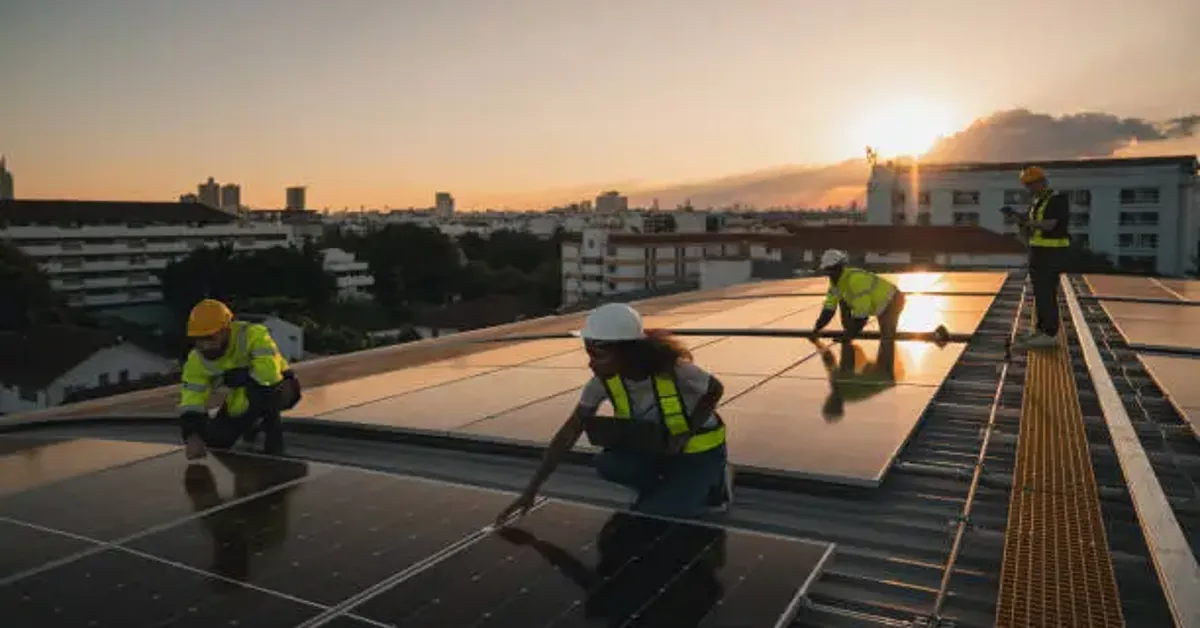Solar energy systems have become a reliable option for property owners seeking sustainable power sources. One of the most important aspects of ensuring long-term energy output is the strategic placement of solar panels. It’s not just about installing panels on a rooftop; efficiency depends on a combination of factors, including direction, tilt, spacing, and even shading analysis. With the growth of solar adoption in areas like Auburn, CA, more homeowners and businesses are relying on professionals to evaluate every angle—literally.
A proper setup can lead to major differences in energy capture, helping to maximize returns and reduce grid reliance. We will explore how solar panel placement is optimized by installers who understand how to match environmental and structural factors with advanced planning methods. From terrain assessment to digital modeling, the process behind panel installation is far more technical and tailored than most people realize.
Key Techniques Installers Use to Optimize Solar Panel Placement
- Analyzing Sun Path and Roof Orientation
A crucial starting point in panel placement is analyzing the sun’s path throughout the year. In the northern hemisphere, including locations like Auburn, CA, panels typically face south to absorb the maximum amount of sunlight. However, not all properties have roofs that are ideally aligned. Professional installers account for this by adjusting the angle or, when necessary, recommending ground-mounted arrays. Tools like solar pathfinders or apps that utilize GPS and real-time solar data enable teams to simulate how much sunlight each part of a roof will receive. These simulations factor in seasonal changes, helping predict how shadows from chimneys, nearby trees, or neighboring buildings could impact performance. Instead of relying on guesswork, this methodical approach ensures that the panels face the most productive direction. It also allows the installer to advise the client on which part of their property offers the highest potential energy output across all seasons.
- Calculating the Ideal Tilt Angle for Maximum Output
The tilt of the solar panels affects how directly they face the sun. The optimal angle depends on geographic latitude, roof structure, and intended energy goals. Installers in Auburn adjust the tilt to match the city’s latitude (roughly 39 degrees) for year-round efficiency. However, adjustments are made depending on energy usage patterns. For instance, a steeper angle may be chosen for better winter performance when the sun is lower in the sky, while a flatter angle might favor summer output.
Mounting systems now allow for flexible adjustments, even post-installation, which can help optimize energy production over time. In some installations, adjustable or seasonal mounts are used, allowing panels to shift throughout the year to maintain better exposure. By customizing the tilt angle, installers help property owners generate more power per panel, which often results in fewer panels needed to achieve the same energy targets—saving both space and cost.
- Identifying and Avoiding Shaded Areas
Shading can significantly reduce the performance of a solar array. Even partial shade on a small portion of one panel can impact the output of the entire string. Professional installers conduct shading analyses during site surveys using drones, specialized software, or manual devices such as sun path charts. This helps them identify problematic areas during different times of the day and year. Instead of avoiding the whole shaded zone, installers use smart layouts or microinverters to isolate and minimize the effect of shaded sections. This allows unaffected panels to keep operating efficiently.
Additionally, layout plans can include the removal or trimming of overhanging branches, as well as the relocation of vents and satellite dishes, to clear the ideal path for the panel. When shading cannot be avoided, bypass diodes and panel-level optimization tools are employed. These careful adjustments preserve energy production while maintaining visual aesthetics and structural integrity, demonstrating how shading is addressed through detailed planning and targeted technology.
- Spacing Panels to Prevent Self-Shading and Ensure Ventilation
Proper spacing between panels matters just as much as direction or tilt. Panels that are too closely installed, especially on flat roofs, can end up casting shadows on each other—particularly in the early morning or late afternoon. Installers measure potential shadow length based on panel height and sun angles during winter, which is when shadows are longest. They then plan appropriate row spacing to avoid loss of productivity. This becomes even more critical when installing on commercial buildings or arrays on open land. Spacing also allows for air circulation underneath the panels, helping to keep them cool.
Since overheating can reduce efficiency, maintaining airflow through strategic spacing is an indirect but essential performance factor. Balancing the number of panels that can be installed with the need for spacing is a key part of the installer’s role. It’s a calculation that must prioritize both performance and structural feasibility, particularly when dealing with limited rooftop areas.
Optimizing solar panel placement is a detailed, calculated process that directly affects the return on a solar investment. Installers don’t just mount panels where they fit—they evaluate roof angles, sun patterns, shading, spacing, and hardware compatibility to create a layout that maximizes efficiency for decades. Through digital tools, shading analysis, and strategic decisions regarding tilt and direction, each solar setup is designed to meet the specific site conditions. In locations like Auburn, CA, where sunlight is abundant but rooftops vary widely, this process ensures that every panel counts.

